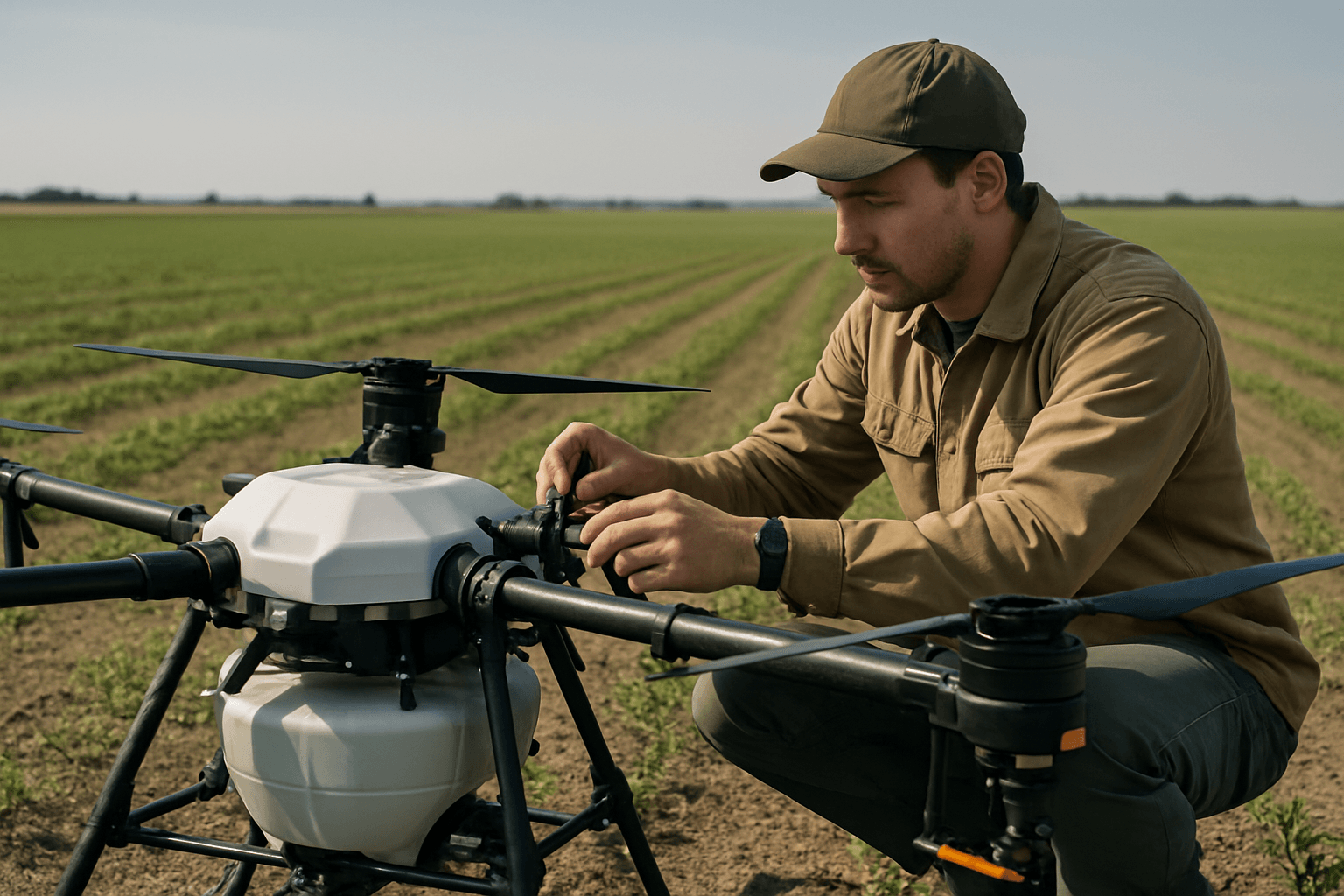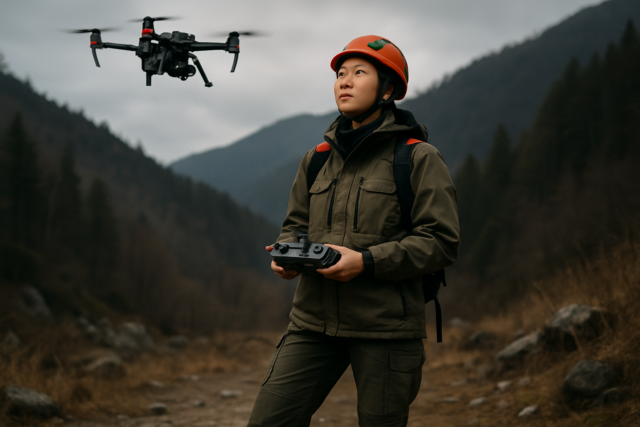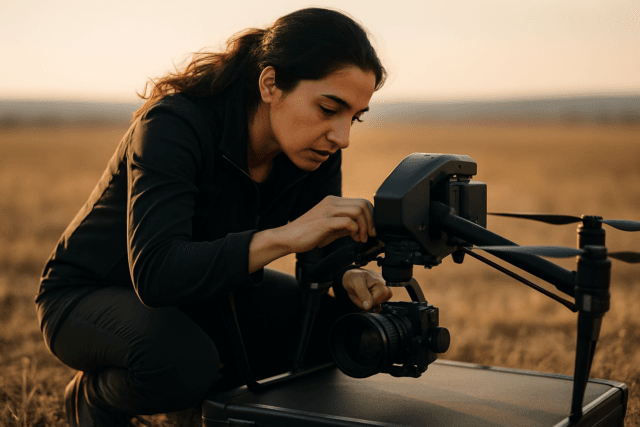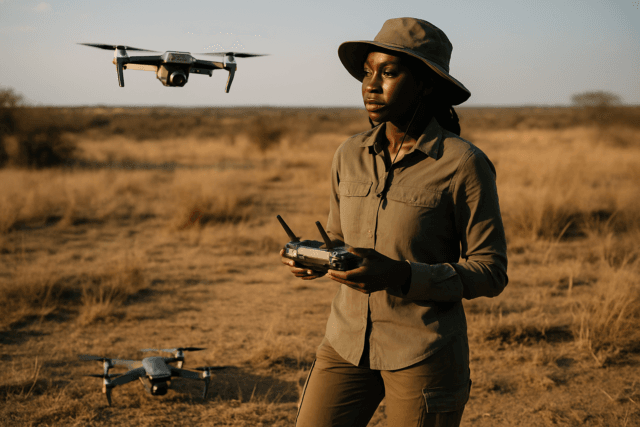The advent of unmanned aerial vehicles (UAVs), commonly known as drones, has ushered in a transformative era for precision agriculture. These sophisticated flying platforms, equipped with an array of sensors and imaging capabilities, have become indispensable tools for modern farmers. From comprehensive crop monitoring and soil analysis to targeted pest control and precise fertilizer application, agricultural drones offer unprecedented efficiency, cost savings, and data-driven insights that were once unimaginable.
However, the efficacy and safety of these advanced systems are intrinsically linked to the vagaries of weather. Despite their technological prowess, agricultural drone operations remain highly susceptible to atmospheric conditions, which can profoundly influence flight stability, battery performance, sensor accuracy, and ultimately, the utility of the collected data. Understanding and strategically mitigating these environmental impacts are paramount for maximizing the benefits of drone technology in farming.
The Integral Role of Drones in Precision Agriculture
The Rise of Unmanned Aerial Vehicles in Farming
Drones have revolutionized traditional farming practices by providing aerial perspectives and data collection capabilities that were previously time-consuming or expensive. They enable farmers to survey vast acreages in minutes, significantly reducing labor costs and improving response times to emerging issues like disease outbreaks or nutrient deficiencies. This aerial monitoring capacity fosters proactive decision-making, moving agriculture towards more precise and sustainable models.
Key Applications of Agricultural Drones
Agricultural drones are deployed across various critical farming functions:
- Crop Monitoring: Assessing plant health indicators, growth stages, and stress levels through high-resolution RGB, multispectral, and hyperspectral imaging.
- Soil and Field Analysis: Generating detailed maps of soil health, nutrient distribution, and moisture variability for optimal planting and resource allocation.
- Precision Spraying and Fertilization: Automating targeted application of water, fertilizers, and pesticides, minimizing waste and environmental impact.
- Irrigation Management: Using thermal sensors to identify subtle variations in soil moisture, enabling hyper-targeted irrigation.
- Livestock Monitoring: Surveying livestock, managing pastures, and tracking animal health.
- Yield Prediction and Damage Assessment: Forecasting crop yields and rapidly assessing damage after adverse events.
Navigating Atmospheric Challenges: How Weather Affects Drone Performance
The successful deployment of agricultural drones hinges on a thorough understanding of how various weather elements influence their operation. Each atmospheric factor presents unique challenges that can compromise flight safety, data integrity, and operational efficiency.
Wind: The Invisible Obstacle
Wind is arguably the most significant and unpredictable weather factor impacting agricultural drone operations. It directly affects the drone’s stability, control, and energy consumption.
Effects on Flight Stability and Control
Lightweight agricultural drones, common in farming, are particularly susceptible to wind drift. When gusts pick up, drones must expend significantly more power to maintain a balanced and stable flight path, making them harder to control and increasing the risk of accidents or crashes. Most consumer drones can operate safely in winds up to 10-15 mph, while professional models might handle 20-25 mph. Beyond these thresholds, flight stability noticeably deteriorates.
Impact on Battery Life and Endurance
Flying against strong winds or in turbulent conditions forces drone motors to work harder, dramatically increasing power consumption and draining batteries at a much faster rate. This directly reduces total flight time and limits the area a drone can cover, impacting the efficiency of large-scale mapping or spraying missions.
Consequences for Data Accuracy and Spray Drift
Strong winds can induce vibration in drone cameras, leading to blurry images and poor mapping data, which compromises the accuracy of collected insights. For spraying operations, wind is a critical factor influencing chemical drift. Wind speeds over 8 mph can significantly increase spray drift, causing chemicals to blow off target, leading to uneven distribution, reduced effectiveness, wasted product, and potential environmental contamination. Optimal wind speeds for drone spraying typically range from 3 to 10 meters per second (approximately 7 to 22 mph), or ideally between 3-8 mph.
Precipitation: Rain, Snow, and Their Detrimental Effects
Most agricultural drones are not designed to operate in rain or snow due to the high risk of damage and compromised performance.
Electronic Damage and Sensor Compromise
Even light drizzle can cause severe damage to sensitive internal components such as motors, electronic circuits, and sensors. Moisture can infiltrate the gimbal or camera, leading to short-circuits, image distortion, or complete malfunction. Water damage is rarely covered under warranty unless the drone is explicitly rated for wet conditions.
Impaired Visibility and Data Quality
Rain, snow, or even heavy fog can significantly reduce visibility, making it difficult for operators to maintain the visual line of sight (VLOS) required by many aviation regulations. Water droplets on camera lenses can blur images, create streaks, or distort the quality of footage, rendering the collected data less useful for analysis like multispectral or infrared scanning.
Implications for Agricultural Applications (e.g., Spraying)
Beyond hardware damage, wet conditions reduce the efficacy of aerial spraying, as chemicals may not adhere properly to wet leaves or can be washed away before absorption, rendering the application ineffective.
Temperature Extremes: From Scorching Heat to Freezing Cold
Both excessively high and low temperatures can significantly impact drone performance, particularly affecting battery efficiency and the functionality of electronic components and sensors.
Battery Performance Degradation
Drone batteries are highly sensitive to temperature. In high temperatures (above 35°C or 95°F), batteries drain faster and may overheat, causing flight software to shut down or reduce power. Conversely, cold weather significantly reduces battery efficiency, with performance potentially dropping by up to 40% in sub-freezing conditions. This leads to shortened flight times and can even result in mid-air power failures. Batteries generally perform best between 15°C and 35°C.
Sensor and Component Malfunctions
Extreme heat can cause cameras and other sensors to overheat or shut down, leading to less accurate data. In cold weather, plastic components can become brittle and more prone to breakage, and critical parts can freeze mid-flight if not properly maintained. Condensation, occurring when a cold drone is brought into a warmer environment, can also damage internal circuits and fog optical components.
Operational Windows and Crop Susceptibility
High temperatures can also affect the efficacy of agricultural applications, causing pesticides to evaporate quickly or degrade, and potentially burning crops. Optimal spraying times in hot weather are typically early mornings (8-10 a.m.) and late afternoons (4-6 p.m.) to avoid direct sun and high temperatures.
Humidity and Moisture Levels: Subtle Yet Significant Impacts
Even without visible precipitation, high humidity can negatively affect drone operations.
Condensation and Optical Interference
Excessive moisture in the air can lead to condensation on sensitive electronics and camera lenses, reducing image sharpness and distorting critical sensor readings, such as those from multispectral sensors used for NDVI scans. Humidity exceeding 85% can cause thermal sensors to produce misleading temperature gradients across crop fields.
Electronic Vulnerabilities and Barometric Accuracy
Moisture can seep into joints and circuit boards, potentially damaging electronic components. Humid air can also affect barometers, leading to less accurate altitude readings.
Impact on Chemical Application
High humidity can cause liquid pesticides to stick together, leading to clogging issues in the spraying system. However, some research suggests that humidity above 60% can actually help reduce spray drift by preventing droplets from evaporating too quickly, increasing their adhesion and penetration on crop surfaces.
Visibility Constraints: Fog, Haze, and Light Conditions
Clear visibility is paramount for safe and effective drone operations, particularly due to regulatory requirements like maintaining visual line of sight.
Challenges for Visual Line of Sight and Navigation
Fog, haze, and low cloud cover severely reduce visibility, making it difficult for the operator to see the drone and its surroundings, increasing the risk of collisions with obstacles or other aircraft. These conditions also impair the drone’s sensors, affecting object detection, obstacle avoidance, and navigation systems.
Effects on Imaging and Data Quality
Poor visibility directly hampers the quality of images and videos captured, impacting tasks like crop mapping and aerial photography. Overcast skies reduce light levels, affecting image clarity and the accuracy of multispectral data, which relies on consistent lighting for meaningful comparisons over time. Conversely, bright midday sun can cause glare, washing out images and confusing vision-based navigation systems.
Optimizing Flight Times for Optimal Lighting
To ensure high-quality data collection, especially for precision mapping and multispectral analysis, farmers should schedule flights during periods with optimal lighting. Early mornings and late afternoons are often ideal, as wind speeds are typically calmer, and sunlight is softer, reducing glare and harsh shadows.
Mitigating Weather Risks: Strategies for Resilient Drone Operations
While weather presents significant challenges, several strategies and technological advancements can help agricultural drone operators mitigate risks and ensure more consistent performance.
Pre-Flight Planning and Weather Monitoring
Thorough pre-flight checks and real-time weather monitoring are crucial for safe and effective operations.
Utilizing Specialized Weather Forecasts
Farmers should consult reliable weather forecasts specifically tailored for drone operations, such as UAV Forecast and Windy. These apps provide critical information like wind speed at different altitudes, temperature, humidity, and cloud cover, which standard weather apps often miss. Checking local radar and microclimate forecasts can provide an even clearer picture.
Adhering to Regulatory Guidelines
Operators must comply with local and national aviation regulations, such as the FAA’s Part 107 in the United States, which mandate minimum visibility (e.g., 3 statute miles) and cloud clearance (e.g., 500 feet below, 2,000 feet horizontally). Operating in hazardous conditions may violate these rules and compromise safety.
Equipment Selection and Technological Advancements
Investing in the right equipment can significantly enhance a drone’s resilience to adverse weather.
Investing in Weather-Resistant Drones
While most consumer drones are not fully waterproof, specialized weather-resistant models are emerging in the agricultural sector. These UAVs feature sealed electronic compartments, hydrophobic coatings, and higher IP ratings (e.g., IP67) to protect critical components from moisture. Such drones offer reduced downtime and extend the operational flying window, making them a smart investment for serious agricultural operations.
Advanced Sensors and Thermal Management Systems
Modern agricultural drones often come with advanced sensors and thermal control systems designed to perform better in varied conditions. Some newer models can automatically adjust to wind conditions. Battery heaters, thermal wraps, and advanced thermal management systems help maintain optimal battery temperatures in extreme heat or cold.
Operational Adjustments and Best Practices
Strategic operational adjustments can also significantly reduce weather-related risks.
Optimizing Flight Parameters (Altitude, Speed, Payload)
- Altitude: Flying at lower altitudes, when safe and practical, can help avoid stronger winds typically found at higher elevations. However, this must be balanced with the need for adequate coverage and obstacle clearance.
- Speed: Maintaining a uniform flight speed, generally between 4-6 m/s, is recommended in hot weather for spraying to ensure even coverage.
- Payload: Increasing drone weight with appropriate payloads can improve stability in moderate winds.
- Flight Paths: Planning flight paths perpendicular to wind direction first, then parallel, can help minimize battery drain.
Battery Management in Extreme Conditions
Proper battery management is vital. In cold weather, batteries should be warmed before takeoff using insulated cases or hand warmers, and extra batteries should be carried to compensate for reduced flight times. In hot weather, avoid flying during the hottest parts of the day and allow batteries and drones to cool down in shaded areas between flights. Always charge and store batteries at room temperature.
Post-Flight Maintenance and Storage
After flying in damp or cold conditions, drones should be thoroughly dried, and silica gel packets can be used in cases to reduce moisture and prevent condensation. Regular inspection and maintenance of all drone components, especially after operations in challenging weather, are essential for optimal performance and longevity.
The Future of Weather-Resilient Agricultural Drones
The future of agricultural drones is moving towards even greater resilience and autonomy in diverse weather conditions.
Innovations in Drone Design and Autonomy
Ongoing research and development are focusing on more robust drone designs that inherently handle challenging weather. This includes enhanced wind-resistant designs, improved waterproofing, and more efficient propulsion systems. Advances in AI and machine learning are enabling drones to make real-time adaptive adjustments to their flight parameters in response to changing weather, improving stability and data capture quality.
Enhanced Sensor Capabilities and Data Processing
Future sensors will likely incorporate better anti-fog and anti-glare technologies, along with enhanced thermal and multispectral capabilities that are less susceptible to environmental interference. Improved on-board processing and immediate data analysis capabilities will allow for quicker decision-making even when weather conditions are suboptimal, potentially identifying and compensating for weather-induced data noise.
Towards All-Weather Precision Agriculture
While completely eliminating weather as a factor may be impossible, the continuous evolution of drone technology aims to expand operational windows and reduce weather-related risks significantly. The goal is to move towards an “all-weather” precision agriculture model, where farmers can consistently leverage the power of aerial data and applications, ensuring higher yields, reduced waste, and more sustainable farming practices regardless of atmospheric temperament.





